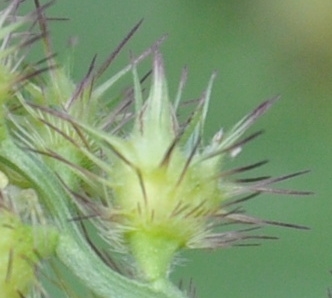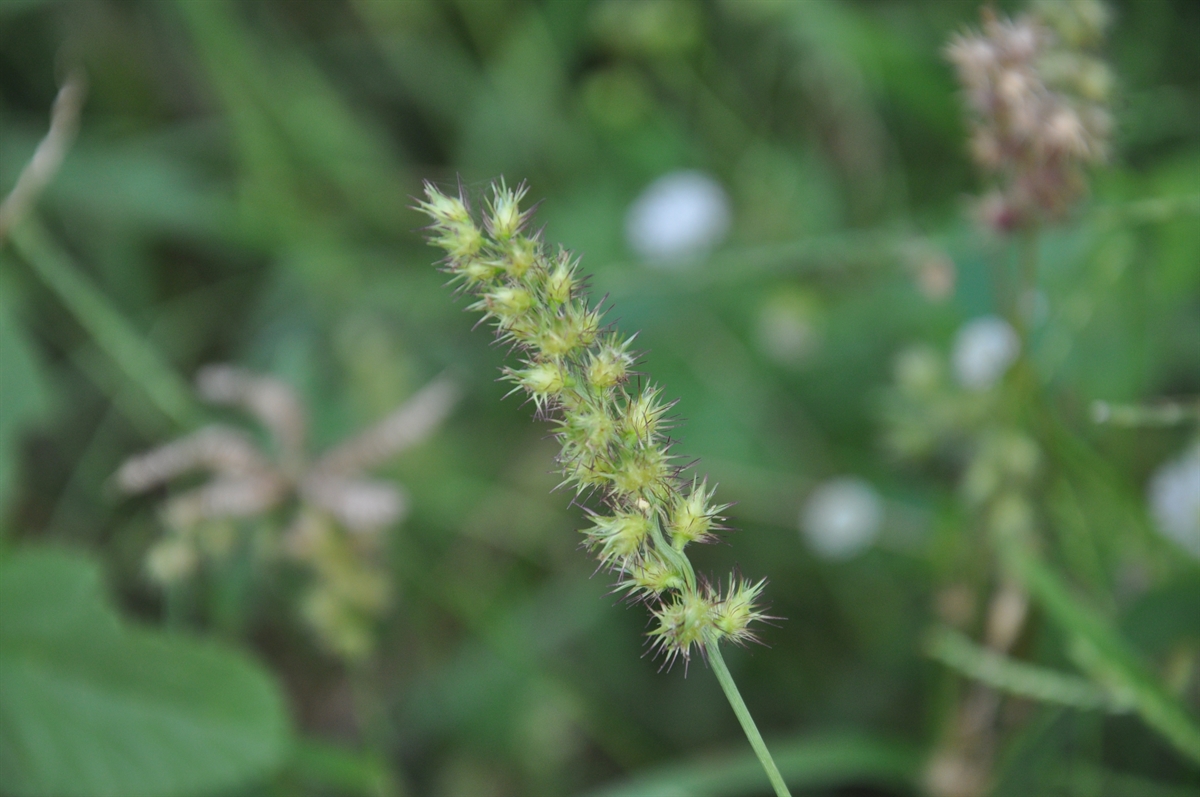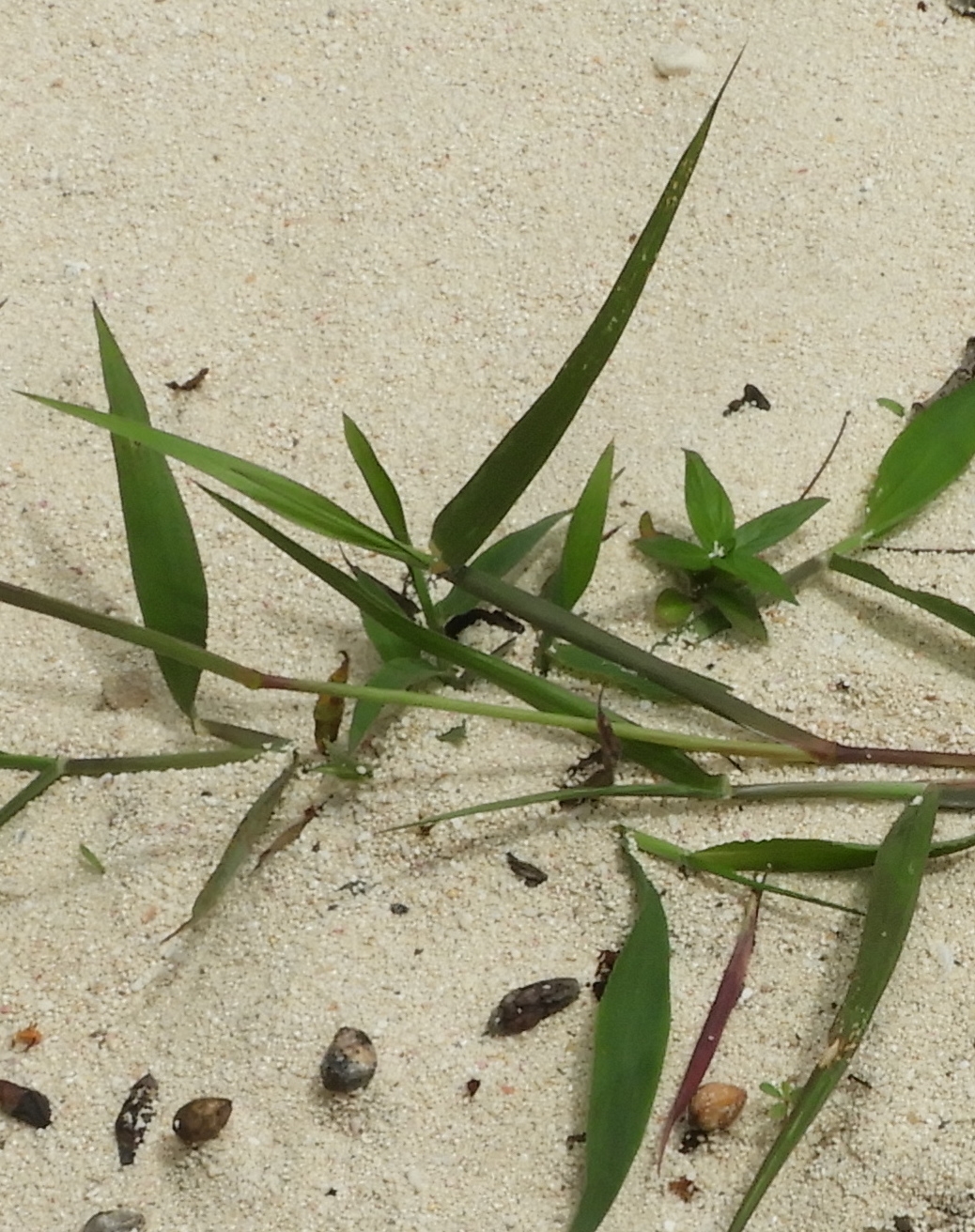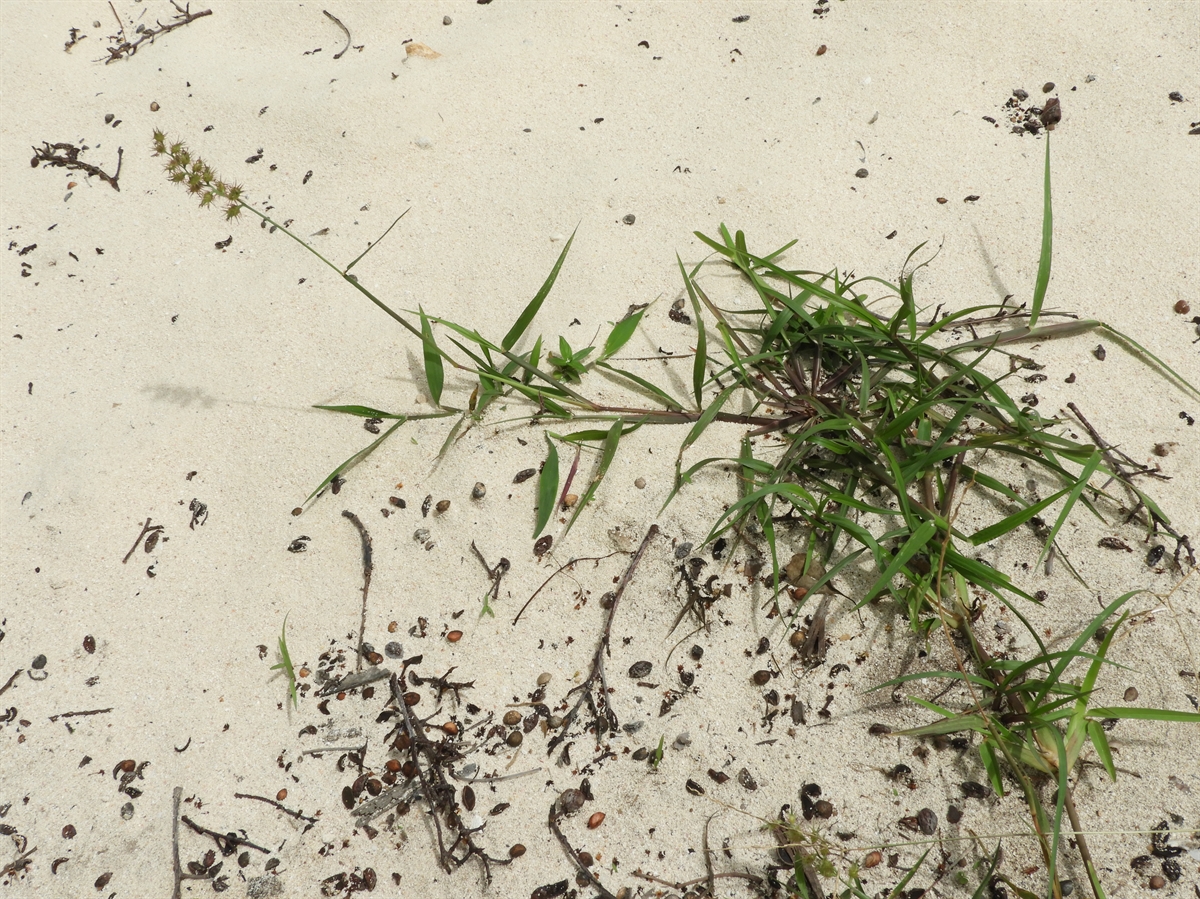Habit: Cenchrus echinatus grows as a decumbent annual to 50 centimeters in length and can form large dense clumps. The leaves are arranged alternately with a sheath extending along the stem that is pubescent along its edge. At the point of divergence of the leaf sheath to the leaf blade is a ciliate ligule. The leaves are parallel veined and to 25 centimeters in length and to 1 cm wide at the point of divergence.
The imperfect, incomplete, zygomorphic flowers are arranged in a terminal racemose panicle. The flowers are highly modified without identifiable structures such as the calyx or corolla. Each flowering unit is a spikelet at the base of which are 2 yellow brown structures called glumes. In the spikelet, there are 2 flowering structures each is subtended by 2 additional structures (lemma and palea). The entire spikelet surrounded by bracts that are sharpened into spines and smaller thinner bristles. The bristles are often red tinged. In each flower within the spikelet there are 3 stamens. The fruit is a caryopsis that turns black at maturity. The entire spikelet/burr is the dispersal unit.
Cenchrus echinatus differs from C. incertus and C. gracillimus in the presence of the smaller bristles on the burr.
Habitat: Cenchrus echinatus grows in sandy areas in Human Altered environments (lawns, abandoned fields, disturbed areas).
Distribution: Cenchrus echinatus occurs on all island groupings within the Lucayan Archipelago as well as the entire Caribbean region, North, Central, and South America. It has expanded globally in tropical and subtropical areas.
Medicinal/Cultural/Economic usage: Cenchrus echinatus has not been used medicinally in the Lucayan Archipelago.



